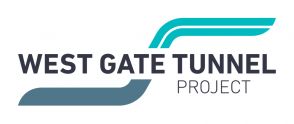Road tunnels can help reduce air pollution by moving traffic off roads where people live and work, putting vehicles underground. In a tunnel, vehicle emissions can be controlled and dispersed more effectively and are monitored to ensure standards are met.
With thousands of tunnels in the world, there are well-established and effective ways to design tunnels and ventilation systems so that there are no negative effects on local or regional air quality.
West Gate Tunnel ventilation system
The ventilation system for the West Gate Tunnel Project will include 2 ventilation structures – 1 above the northern tunnel portal near the Maribyrnong River and the other above the southern (outbound) tunnel portal in the West Gate Freeway.
Studies show that ventilation structures operate most efficiently when located close to the tunnel exit. The West Gate Tunnel’s ventilation system has been designed to:
- meet Victoria’s stringent air quality requirements – which are among the highest standards in the world
- ensure high air quality inside the tunnel
- manage emissions from current and future traffic volumes.
How tunnel ventilation works
Tunnel ventilation systems are designed to maintain safe air quality both inside and outside the tunnel to meet stringent air quality standards.
Ventilation systems work by drawing in fresh air from the tunnel entry, which is then pushed through the tunnel by the movement of vehicles and jet fans.
Before the tunnel exit, air is pushed up and out of the tunnel through a ventilation structure and into the atmosphere where it mixes with fresh air. There are no emissions from the tunnel portals where vehicles enter and exit.
Research from around the world clearly shows emissions from well-designed tunnel ventilation systems have no measurable effect on local or regional air quality
Ventilation system design
An internationally recognised air dispersion model is used to assess the design and height of ventilation structures in achieving effective and safe dispersion. The model takes into account existing air quality, local weather and topography and conservative assumptions about vehicle emissions and types.
This modelling is based on worst case scenarios to ensure the ventilation system is effective in even the most unlikely circumstances, such as continuously congested traffic and no future improvements in vehicle standards.
Find out more
See the West Gate Tunnel Project’s Environmental Performance Requirements.
